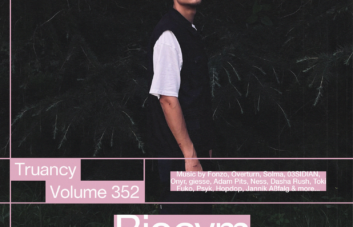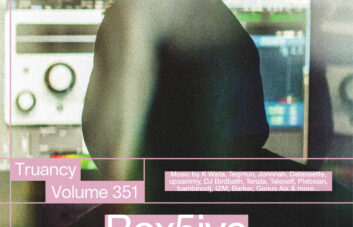Having served in the game for over two decades, Mike Parker has carved out a niche sound. Relying on rich textures and hypnotic grooves, he brings the most out of the bare minimum. His music can be enjoyed both at home on some headphones or being mixed by a DJ in the club. He can definitely be described as a visionary, sticking to his guns from early on in his career. His outpost is Buffalo, New York, where he also teaches fine art. ‘Minimal’ is a word that is thrown around a lot and can be used to chronicle more than one movement, however Parker’s take on the nomenclature is definitely fresh, unique and inimitable.
For his latest four-tracker on Tresor, Disintegrating Sand, Mike Parker fires up the machines once again and creates the journeys that he so excels in creating through a few chosen modular synths. The power lies in the subtleties.
Going back to 1997, with Geophone inaugurating and you subsequently presenting your first releases – what kind of feedback did you get from your listeners? “I don’t remember getting much feedback until numbers 4 and 5 were released. This was before the rise of social media and contact with people was sporadic then. Some people were put off by the odd time signatures. My US distributor at the time cautioned me not to release an ambient track on number 4, because in his words, it would “hurt sales”. But other people liked my sound.”
You’ve previously described your music as “minimal enough to be blended with something else, but not so minimal that it’s boring by itself.” Where do you draw the line during your productions as to create such an aesthetic to your music? “It’s a matter of balance, not expectations. For example, if it is expected that a high-hat sound should enter the mix at a certain point, would it not be wrong to leave it out so that a DJ could add it through their own mixing choices?”
What elements do you include or exclude to achieve this? “The main synth line should be powerful, liquid and undulating. I usually exclude crescendos if I believe they are too obvious. That is not to say that crescendos always share the same attributes.”
Every listen of your tracks seem to unearth a new texture, feeling or depth – did you envision this amount of longevity when you first started? “No, but one has to continue as if your best track has not yet been written. The artist Alberto Giacometti once said that he began sculpting precisely because it was the activity he understood the least.”
Your tracks invoke a deep sense of catharsis when listening to them – do you get to experience this feeling when creating them or does the magic elude you as you can see behind the smoke and mirrors? “I feel it most in the studio, when the track is first created. If I’m lucky, I can share that feeling with the audience later.”
When thinking of Mike Parker, it’s hard to ignore yourself “sun-lighting” as a Fine Art professor. Do you share similar approaches when creating both crafts? “My students inspire me. They come into the process of creativity with their own sets of influences and as a teacher, sometimes I connect with that. If I do my job successfully, I can guide them to methods with which they can expand upon. It is similar to music, always leading to the next question.”
Finally, I often see a lot of retro sci-fi art pop up on your Facebook. What is it about Godzilla you love so much?! “Not only Godzilla, but many films of the science fiction and horror genres. In the past, they were often made by very creative people who worked within a limited budget. This “limitation” was surpassed by their creative powers and their hunger to produce. I admit that these films were a part of my childhood, but they made a lasting impression. Besides, they are fun.”
Mike Parker’s Disintegrating Sand is out now.



